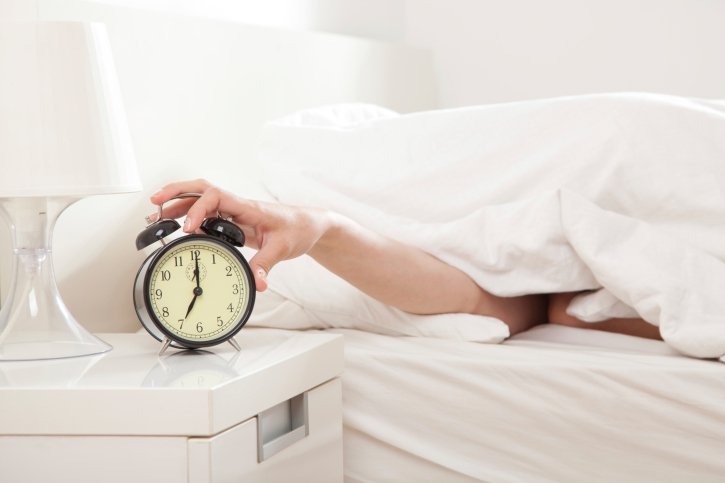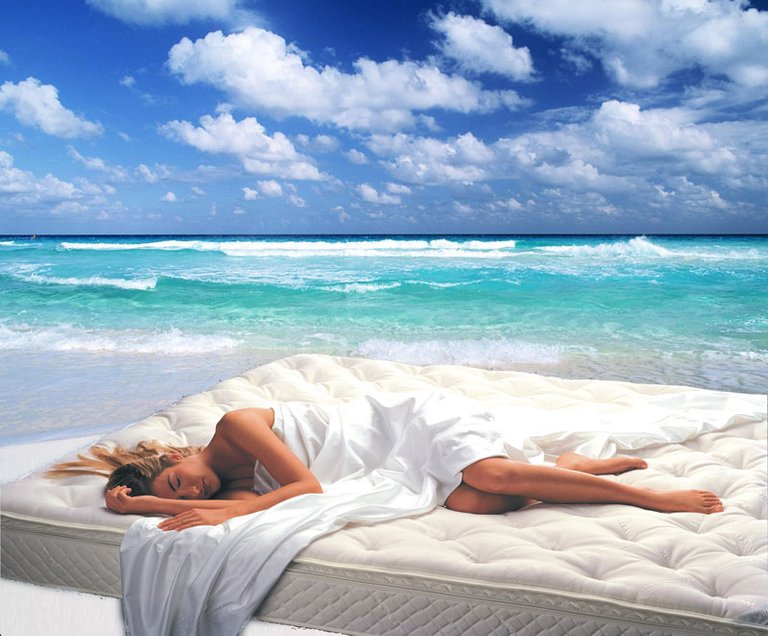
Imagine that you live in the XVIII century. Now only half of the ninth evening, you put on your nightcap, extinguish the candle and go to sleep, smelling wax that gently fills the air around your bed. It takes several hours. 2:30. You wake up, you grab your coat and go to the neighbors, because they too do not sleep. Easy to read, pray. Obviously, before the era of electricity twice-a dream at night it was quite widespread.
Then we slept for two nights, getting up an hour or two for fun, and then going to bed before dawn.
With Slumberwise.com:
The fact that before we slept twice in the night, was first discovered by Roger Ekirch, a professor of history from Virginia Tech.
he found in his research that we can not always slept eight hours. We slept on the two shorter interval in the range of night. The range was about 12 hours and began with a three- or four-hour sleep and then wake followed - two or three hours, and then sleep till morning.
Mentions about this are found everywhere in the literature, court documents, personal papers and notes. Surprisingly not that people are sleeping two, and that the concept was so widespread. Son of two segments was customary, accepted way to sleep.
"It's not the number of references, and how he was mentioned - as if it were common knowledge," - says Ekirch.
English physician wrote, for example, that the ideal time for study and meditation is the segment between "first sleep" and "second sleep." In Chaucer in "Canterbury Tales" is a heroine who goes to sleep after the "first sleep".
And, explaining why the working class had more children, a doctor from the XVI century reported that they usually had sex after the first sleep.

Book Ekircha "At the end of the day: the night in the past," is full of such examples.
How do people dispose of these additional hours? Something like this, as you can imagine imagine.
Most were in their beds and bedrooms, sometimes reading, and often use this time to pray. Religious rituals included a special prayer for the time between two dreams.
Someone smoked, talked with people in the household, or had sex. Some were more active and went to visit the neighbors.
As we know, the practice eventually faded. Ekirch withdraws changes in the appearance of the street lighting and, eventually, electric indoor lighting as well as the popularity of coffee houses. Kozlowski writer Craig (Craig Koslofsky) develops a theory in his book "Empire Evening." With the proliferation of street lighting night ceased to be a lot of criminals and the lower classes and became a time for work and socializing. Two sleep began in the end be considered a waste of these hours.
Science, apparently reinforces the fact that we find in the history books. During the four-week study with 15 men, existing in conditions of limited daylight hours, the beginning of something strange happens. To make up for lack of sleep clock - a common situation for most of us - the participants began to wake up in the middle of the night:
They became two of sleep.
During the 12-hour interval, participants first slept four or five hours, then stay awake for several hours, then slept again until morning. In general, they are not asleep for more than eight hours.
The clock in the middle of the night, between two dreams, differed unusual tranquility similar to meditation. It was not a night tossing in bed, which many of us had a chance to experience. The subjects did not panic over the fact that they can not fall back asleep, and used this time to relax.
Russell Foster (Russell Foster), a professor of neuroscience at Oxford, points out that even with the existing models of the awakening of sleep at night - not always cause for concern. "Many people wake up at night and panic, - he says. - I tell them that they are experiencing a relapse of bimodal sleep pattern. "
Although the article said that to sleep twice in the night, there is no advantage, it is difficult to imagine that it will not have any serious impact on our daily consciousness. How useful will be to us a few hours "in an unusual tranquility similar to meditation?" No seriously. I have not tried to apply the "bimodal" a dream, but I think many of us, including me, encountered him. Our incredibly downtrodden schedule does not allow us to consider the advantages of meeting with some other states of consciousness - except for an eight-hour sleep from exhaustion.
But we can not go back to doelektricheskomu lifestyle - early, early bedtime. And yet, maybe we could use this knowledge to improve our quality of life and open up alternative modes of mind and time for yourself.

Time - the most valuable resource in our lives. I have every year about 2 months extra time / Eugene Dubovoi
Eugene Dubovoi - adept polyphasic sleep. While still a student, he realized that he was desperately short of time: study, work, personal life. Therefore, Eugene decided to follow in the footsteps of Leonardo da Vinci and Salvador Dali - began practicing multiphase dream. For two years, Eugene sleeps in total for 4.5 hours per day. He now works as a project manager in one of the large companies, and together with a friend makes an app designed to help people move to polyphasic sleep system.
According to Eugene and other advocates of polyphasic sleep a person is not particularly in need of Non-REM phase - the main energy "charging" occurs during REM-sleep. The objective of the multiphase sleep - learn to enter into REM sleep, as quickly as possible, without wasting time on "intermediate stations". It is believed that a slow night's sleep is longer (one goes through all its stages), at the time, both during the day easier to dive into REM sleep.
According to Eugene, first his family worried about him. We come to a compromise: polyphasic sleep a month "probation" period. If there are any health problems during these 30 days, the experiment is terminated immediately and flatly. It took 2 years. Eugene says that is full of strength and energy.